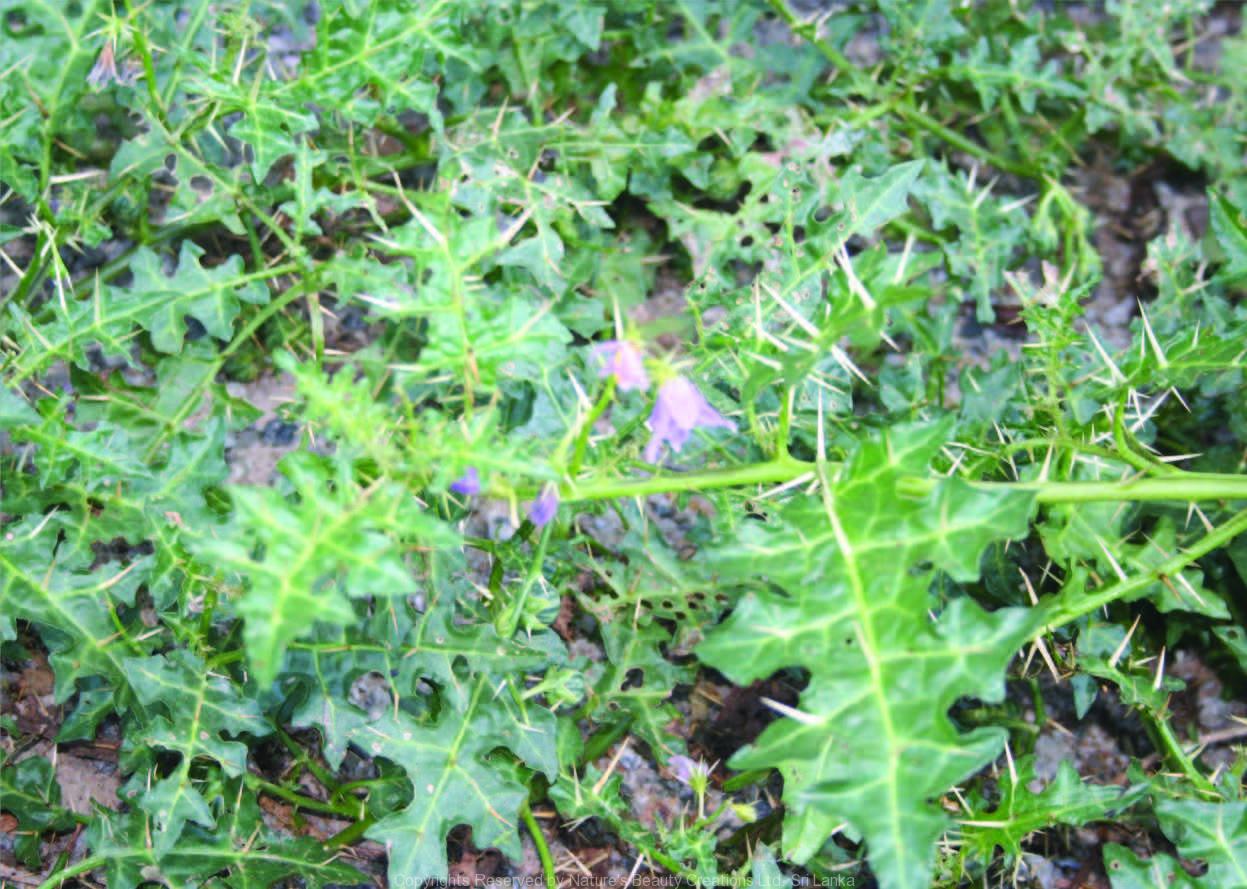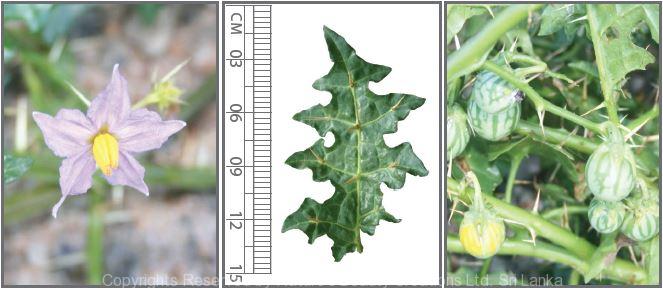

Traditional Knowledge
Useful plant parts :
Whole plant, root and fruit
Uses in traditional medicine :
- One tea spoon of berry juice is taken to treat sore throats
- Root decoction is prescribed for chest pain and catarrh
- Whole plant is valued as an expectorant and a diuretic
- Used for cough, asthma, colic fever, loss of appetite, chest pains, toothache, dropsy and gonorrhoea
Scientific Research
Chemical constituents:
Steroidal glycoalkaloids: solasonine, solamargine and khasianine from aerial parts
Bioactivity :
Alcohol and aqueous extract of fruits: hepatoprotective, hypoglycaemic, antiurolithiatic, nephroprotective; alcohol extract of leaves: antihyperglycaemic, antioxidative, wound healing; methanol extract of aerial parts: antinociceptive; aqueous extract of roots: diuretic
Clinical:
Oral administration of whole plant powder is effective in bronchial asthma
References : Dewangan, H. et al., (2012), Potential wound healing activity of the ethanolic extract of Solanum xanthocarpum schrad and wendl leaves, Pak J Pharm Sci, 25(1), 189-94. Gupta, R. K. et al. (2011), Hepatoprotective effect of Solanum xanthocarpum fruit extract against CCl4 induced acute liver toxicity in experimental animals, Asian Pacific Journal of Tropical Medicine, 4(12), 964-968. Hussain, T. et al., (2012), Nephroprotective activity of Solanum xanthocarpum fruit extract against gentamicin-induced nephrotoxicity and renal dysfunction in experimental rodents, Asian Pac J Trop Med, 5(9), 686-91. Kar, D. M. et al., (2006), Studies on hypoglycaemic activity of Solanum xanthocarpum Schrad. & Wendl. fruit extract in rats, Journal of Ethnopharmacology, 108, 251–256. Rahman, M. T. et al. (2003), Antinociceptive activity of the aerial parts of Solanum xanthocarpum, Fitoterapia, 74, 119–121. Ranka, D. et al., (2013), Diuretic potential of aqueous extract of roots of Solanum xanthocarpum Schrad & Wendl, a preliminary study, Indian J Exp Biol, 51(10), 833-9. Patel, P. et al., (2012), Antiurolithiatic Effects of Solanum xanthocarpum Fruit Extract on Ethylene-Glycol-Induced Nephrolithiasis in Rats, J Young Pharm, 4(3), 164-70. Poongothai, K. et al., (2011), Antihyperglycemic and antioxidant effects of Solanum xanthocarpum leaves (field grown & in vitro raised) extracts on alloxan induced diabetic rats, Asian Pac J Trop Med, 4(10), 778-85. Shanker, K. et al. (2011), Simultaneous determination of three steroidal glycoalkaloids in Solanum xanthocarpum by high performance thin layer chromatography, Journal of Pharmaceutical and Biomedical Analysis, 54, 497–502. Surveswaran, S. et al. (2003), Systematic evaluation of natural phenolic antioxidants from 133 Indian medicinal plants, Food Chemistry, 102, 938–953.
Copyrights Reserved By
Natures Beauty Creations




